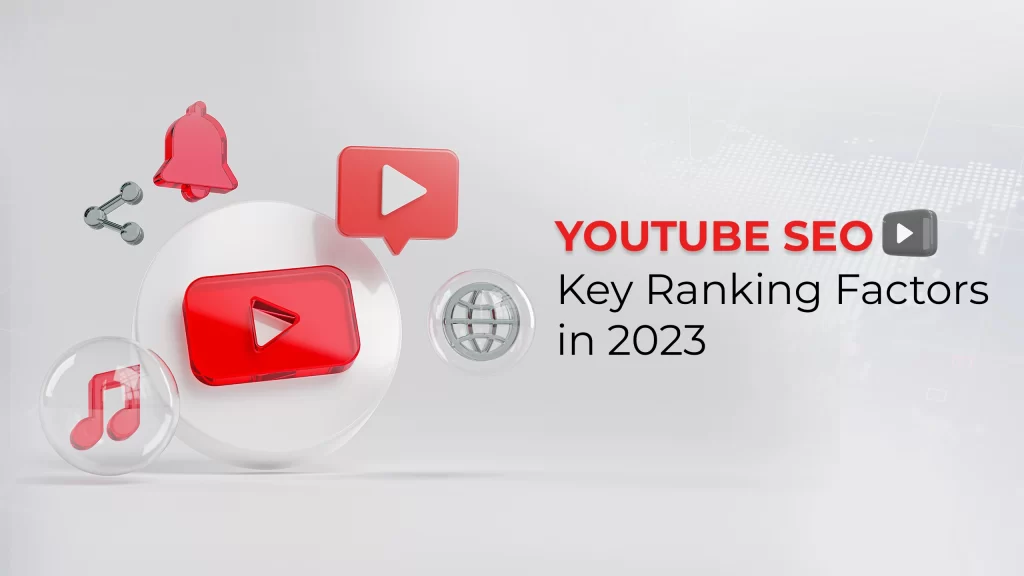In the ever-evolving landscape of digital content, YouTube continues to reign supreme as the go-to platform for video creators. With billions of users and hours of content being uploaded daily, it’s crucial to understand the intricacies of YouTube SEO (Search Engine Optimization) to ensure your videos get the visibility they deserve in 2023. In this article, we’ll decode the key ranking factors that matter the most this year.
1. Quality Content is Still King
While various ranking factors come into play, the cornerstone of YouTube SEO remains high-quality content. In 2023, YouTube’s algorithm is smarter than ever and can analyze video content comprehensively. Factors like watch time, user engagement, and video length are all taken into account. Create content that resonates with your audience, keeps them engaged, and compels them to watch until the end.
2. Video Title and Description Optimization
Your video’s title and description serve as the initial hooks for viewers and search engines alike. Craft titles that are concise, descriptive, and intriguing. Keep your meta title between 60 to 70 characters to ensure it displays well in search results. In the meta description (160-170 characters), provide a brief summary of your video’s content, including relevant keywords. Speaking of which…
3. Keyword Research and Usage
Keywords remain a fundamental part of YouTube SEO. Extensive keyword research will help you understand what your target audience is searching for. Use tools like Google Keyword Planner, Ubersuggest, or Ahrefs to identify relevant keywords and phrases. Incorporate these strategically into your video titles, descriptions, tags, and even in the video content itself. However, avoid keyword stuffing, as it can negatively impact your rankings.
4. Engagement Metrics Matter
YouTube rewards videos that keep viewers engaged. Metrics like watch time, click-through rate (CTR), and audience retention are crucial. Encourage viewers to like, comment, and subscribe, as these interactions signal to YouTube that your content is engaging. Additionally, crafting eye-catching thumbnails can boost your CTR and help your videos stand out in search results.
5. Video Transcripts and Closed Captions
Accessibility is a significant factor in YouTube’s ranking algorithm. Providing accurate transcripts and closed captions not only makes your content accessible to a wider audience, including those with hearing impairments, but it also helps search engines understand your video’s content better. YouTube’s automatic captioning can be edited for accuracy, ensuring your transcripts are spot on.
6. Video Length and Viewer Retention
The ideal video length varies depending on your content, but generally, YouTube favors longer videos. Aim for videos that are at least 10 minutes in length, as these can incorporate more ads, increasing your revenue potential. However, remember that the content must remain engaging throughout to maintain viewer retention. Use viewer retention analytics to identify where viewers tend to drop off and improve those segments.
7. Optimize Video Tags
Tags help YouTube understand the context of your video. Use relevant tags, including your focus keyword, and include variations and long-tail keywords. While tags are not as critical as they once were, they still play a role in helping your video surface in relevant search results.
8. Promote Video Across Platforms
YouTube SEO isn’t limited to YouTube itself. Promote your videos on social media, your website, and other online platforms. Encourage sharing and embedding. The more your video is shared and linked to, the more authoritative it appears to search engines.
9. Consistency in Upload Schedule
Maintaining a consistent upload schedule can improve your channel’s visibility. It helps in building an audience that anticipates your content and returns for more. Consistency breeds trust, which is valued by both viewers and YouTube’s algorithm.
10. Monitor Analytics and Adapt
Regularly review your YouTube analytics. Pay attention to which videos perform well and why. Analyze audience demographics, traffic sources, and user behavior. Use this data to refine your content strategy continually.
In conclusion, mastering YouTube SEO in 2023 involves a combination of content quality, keyword optimization, engagement metrics, accessibility, and strategic promotion. Keep in mind that YouTube’s algorithm is constantly evolving, so staying updated with the latest trends and algorithm changes is crucial to maintaining and improving your video rankings. By implementing these strategies and staying adaptable, you can decode the ranking factors that will help your YouTube channel thrive in 2023 and beyond.










